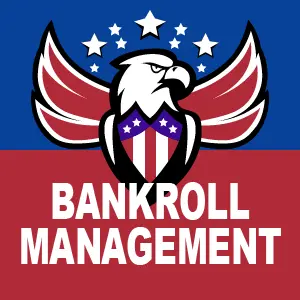What is Bankroll Management?
Chris Wheeler | September 20, 2011

No matter how quick you are at calculating pot odds or how sharp you are at distinguishing between an honest bet and a stone-cold bluff, your skills at the felt won’t mean a thing over time if you haven’t mastered effective bankroll management.
When we talk about bankroll management (BRM), we’re referring to a system used to protect the funds allocated to poker by never risking a large percentage of this money at any one time.
Variance
Sure, you can throw $50 onto your favorite online poker site, bet it all on one table, and move up levels every time you double up. That might be fun, and you might even get lucky. But in the end, no matter how lucky you get, you’re eventually going to lose that money. It doesn’t matter how good you are at poker. The reason? Variance.
No one, not even the pros, can escape variance. Variance describes the inevitable ups and downs of poker.
On any given day, you might see an opponent continually making simple mistakes, poor reads, or playing bad poker and somehow getting paid off for it. They’re calling ridiculous bets on no-hope draws and hitting every time. Similarly, on the same day, you might not make a single wrong move and yet end up gradually losing every chip in front of you.
Running hot, or not running hot
You’ve probably heard poker players talk about “running hot” or being cold-carded. These terms describe how luck can significantly favor or completely evade a player for a particular session, day, or even over weeks!
Over the long run, however, the player who was calling your $100 turn bet to chase his 3-high four-card flush will lose. Similarly, if you continue to play perfect poker, you will profit over time – and profit well.
Good BRM is crucial because without mastering it, you may not have enough money to endure the period required to account for variance.
If you bought into a $2/$4 game for $500 and found yourself all-in pre-flop with Ace of ClubsAce of Spades against an opponent’s Ace of DiamondsAce of Hearts and lost your stack to a ridiculous straight, that’s just bad luck. If that $500 was your entire bankroll, it’s entirely your fault. It doesn’t matter that you didn’t do anything wrong; your money is gone, and there’s nothing you can do to get it back.
If you had bought into a 10c/25c game for $25 and lost your stack under the same circumstances, it would be frustrating, but over the long run, it wouldn’t hurt you at all. You’d have only lost 1/20th of your entire bankroll and still have 19 more buy-ins at that level. Through good play over time, you’d not only make it back, but you’d also start to turn a profit. Eventually, you’d turn your $500 into $1000, at which point you could step up to a 25c/50c game.
Sure, a NL25 game isn’t as thrilling as a NL400 game, but do you really want your heart racing when you find your Ace of ClubsAce of Spades all-in against Queen of SpadesJack of Hearts on a 10 of SpadesKing of Clubs4 of Spades board for your entire bankroll?
Effective BRM allows us to maximize profit while minimizing losses. You can learn how to apply effective bankroll management in the following article.